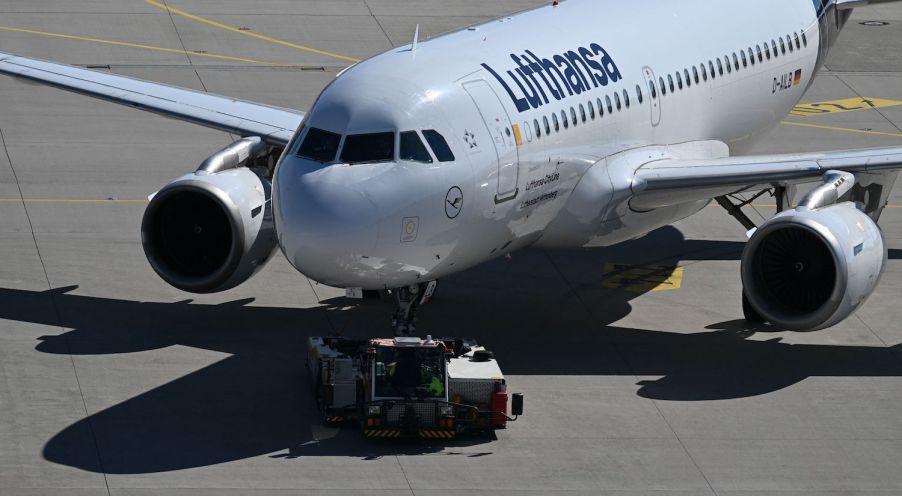
How Much Horsepower Do the Trucks That Tow Planes Around Airports Have?
Have you ever noticed the little trucks that tow airplanes around the airport? These are called pushback tugs. Models powerful enough to push a Boeing 737 back from the gate have as little as 74 horsepower. So how do these little trucks do it? Low-speed gearing, ample torque, and tens of thousands of pounds of ballast.
Aircraft tugs are purpose-built machines

The little trucks that push jumbo jets back from the gates are also called pushback tractors or aircraft tugs. Think of them like tug boats for the airport. Because they are purpose-built, they can operate with relatively small diesel or electric motors. But they do have some highly specialized design features.
Firstly, these aircraft tugs may have a top speed as low as 18 mph. This allows for the internal combustion ones to have ultra-low gearing. Their engines are designed to rev high, staying in a narrow power band.
The XM-30 by EagleTugs (pictured) is engineered to move jumbo jets that weigh up to 215,000 pounds. It’s rated to move the Boeing 737 or Airbus 320–in any weather. So what’s it got under its hood? A 3.6-liter four-cylinder Cummins diesel rated at 74 horsepower and 221 lb-ft of torque.
Aircraft tugs weigh a ton–or 50

The XM-30 and most other aircraft tugs attach to an airplane’s front landing gear with a long lever called a tow or draw bar. This gives them enough leverage to turn the aircraft and enough clearance to not run into it. But it also means they must be heavy enough to maintain traction. This is why aircraft tugs carry ballast.
How much ballast do aircraft tugs weigh? The biggest tugs, set up to move the very largest jumbo jets, can weigh in at 119,000 pounds. Yup, that’s not a typo. That’s more than 15 heavy-duty pickup trucks.
So how do aircraft tugs carry this much weight. Firstly, their low top speed means they need very little suspension, and this suspension can be tuned for high weight. The XM-30, for example, has no suspension whatsoever for its rear axle. Secondly, they have tall tires inflated to a high psi.

For an advertising campaign, Volkswagen towed a Boeing 747 with a Toureg. They did not need to hot rod its engine, but they did need to load it up with 8,600 pounds of concrete and inflate its tires to twice the recommended pressure.
An alternative type of aircraft tug is gaining popularity. These are called “towbarless” aircraft tugs or supertugs. They are light weight, low-profile vehicles and increasingly electric. These supertugs are engineered to wrap around the aircraft’s front landing gear, then lift the entire vehicle off the ground. This means the aircraft acts as ballast and provides traction. These supertugs can also operate in tighter spaces and have better control over the aircraft.
What’s it like towing an airplane?

Aircraft tug operator Paul Thompson wrote about his experience on Jalopnik. He admits that when you stop and realize you are towing a $40-320 million jet, “Driving the pushback itself is pretty intimidating the first few times you do it.”
But he adds that the vehicle has a regular steering wheel, brakes, gear shift, horn, and even turn signals. Its driver also is in radio communication with the airplane pilots and often with a spotter who all help with the procedure. Moving a plane is like pushing any other trailer: the direction you turn the steering wheel is the direction the tail will go.
Once you get used to operating an aircraft tug, the job can be a lot of fun. Thompson concludes, “I’ve pushed hundreds of planes, and it’s kind of a fun power trip, because even though the pilots might make 4 times what I do, they’re still at my mercy for those few minutes.”
Next find out which state has the highest rate of deadly plane crashes or see aircraft tugs in action in the video below:






